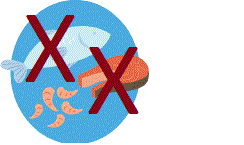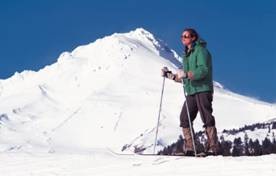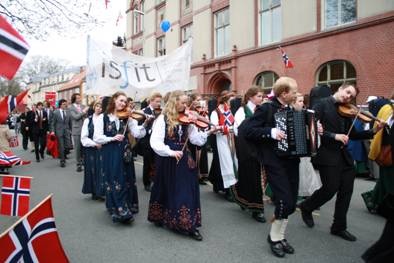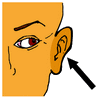10 Extras - NoW
Info på alle sidene
Oppslag i bokmålsordboka - skript
10.3 Edvard Munch
10.3 Edvard Munch
(1863 – 1944)
Edvard Munch er Norges mest kjente maler. Han hadde en trist barndom. Mora døde da Edvard var bare fem år gammel, og søstera hans døde da han var 14. Munch malte mange bilder fra denne vanskelige perioden.
Edvard Munch is Norway’s most famous painter. He had a sad childhood. His mother died when Edvard was only five years old, and his sister died when he was 14. Munch painted lots of pictures from this difficult period.
Munch var en ekspresjonist. Han malte ikke bare det han så, men også det han følte. Maleriet «Skrik» fra 1893 er et eksempel på dette.
Munch was an expressionist. He did not only paint what he saw, but also what he felt. The painting «Scream» is an example of this.
Vi kan se mange av bildene hans i Munch-museet og i Nasjonalgalleriet i Oslo.
We can see many of his pictures in the Munch Museum and at the National Gallery in Oslo.
10.4 Neither - nor
10.4 Neither - nor
Verken - eller
Både – og = Both – and
| Peter liker torsk. Peter liker laks. Peter liker både torsk og laks. Peter likes both cod and salmon. |
Verken – eller = Neither – nor
| Frank liker ikke torsk. Frank liker ikke laks. Frank liker verken torsk eller laks. Frank likes neither cod nor salmon. |

10.5 Easter and 17 May
10.5 Easter and 17 May
Påske og 17. mai
Vi feirer påske til minne om at Jesus døde og sto opp igjen. Påsken begynner på palmesøndag. Torsdag og fredag har alle fri, og skoler og butikker holder stengt. Torsdagen kaller vi skjærtorsdag, og fredagen kaller vi langfredag. Lørdagen er påskeaften. Butikkene er åpne denne dagen, men ikke så lenge.
We celebrate Easter to commemorate Christ’s death and resurrection. Easter starts on Palm Sunday. Thursday and Friday are days off and schools and shops are closed. Thursday is called skjærtorsdag (Maundy Thursday) and Friday is called langfredag (Good Friday). Saturday is påskeaften (Holy Saturday). The shops have limited opening hours that day.
Mandagen etter påskeaften er også en helligdag.
Monday after påskeaften is also a public holiday.
I påsken reiser mange nordmenn på ferie. Mange drar til hytta for å gå på ski og for å være sammen med familien sin. Noen reiser også til utlandet.
Many Norwegians go on holiday for Easter. Lots of people go to their cottages to go skiing and to be with their families. Some also go abroad.

17. mai
17. mai er Norges nasjonaldag. Vi feirer denne dagen fordi Norge fikk sin egen grunnlov (konstitusjon) den 17. mai i 1814.
17 May is Norway’s national day. We celebrate this day because Norway got its own constitution on 17 May, 1814.
17. mai er barnas dag. Barna går i tog, korpsene spiller i gatene, og alle feirer og er glade. Barna spiser pølser og is og drikker brus.
17 May is the children’s day. The children walk in parades, the marching bands play in the streets and everyone celebrates and is happy. The children eat sausages and ice cream and drink soda.

12.5
The eight following exercises (see 1, 2, 4 ... buttons below), picked from the book Flyt og rytme, will help you in obtaining more fluent speech and a more Norwegian-like speech rhythm. You will be working with speakers from various parts of Norway who all will be speaking Bokmål. Normally the exercises will be guided by a teacher. Unfortunately we are not able to give the detailed instructions to self-study students, but below you will find some simple guidelines.
How to do the exercises:
- Select an exercise below. Work with tab A first, then tab B.
- Click the button to the left and try to imitate the voice you are listening to.
- Try to connect all sounds together to one continuous chain.
- Try to make stressed syllables strong and dominant, and unstressed syllable light and short.
Each column contains 12 sentences reflecting the same speech rhythm pattern.
Number 1 to 3 have the following order. You are supposed to listen to the first sentences, and then repeat them:
| 1 | 2 | 3 | 4 |
| SPEECH | SILENCE | SPEECH | SILENCE |
LISTEN |
SPEAK |
LISTEN |
SPEAK |
We expect you to pick up the rhythmical pattern with the first three sentences.
In number 4 to 12 the order is changed to the following:
| 1 | 2 | 3 |
| SILENCE SPEAK  |
SPEECH LISTEN  |
SILENCE SPEAK  |
If you feel the progress is too fast, we advise you to use the book Flyt og rytme and its complete set of exercises.


